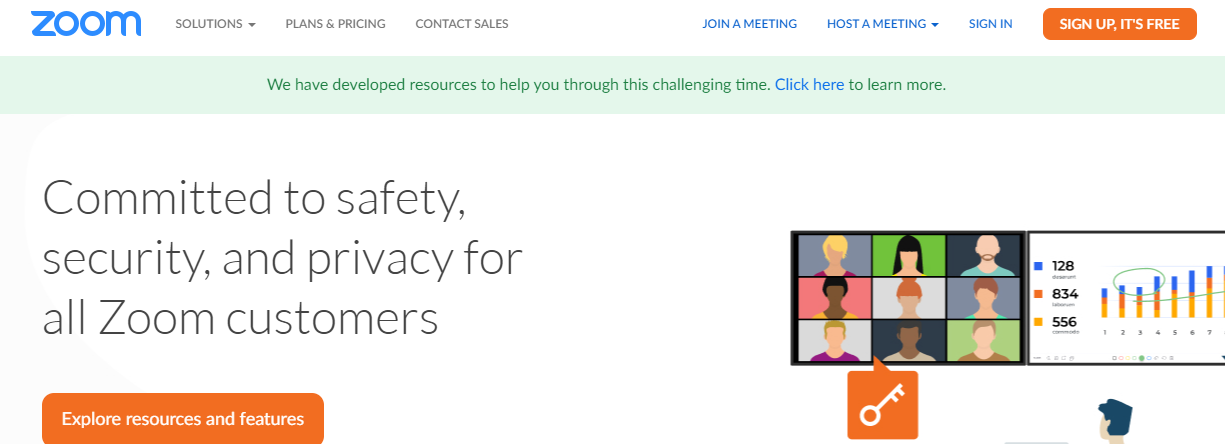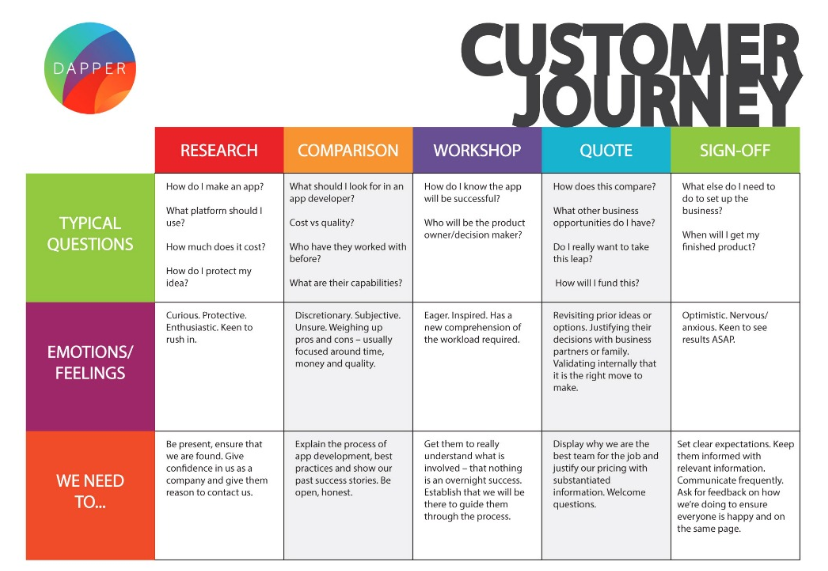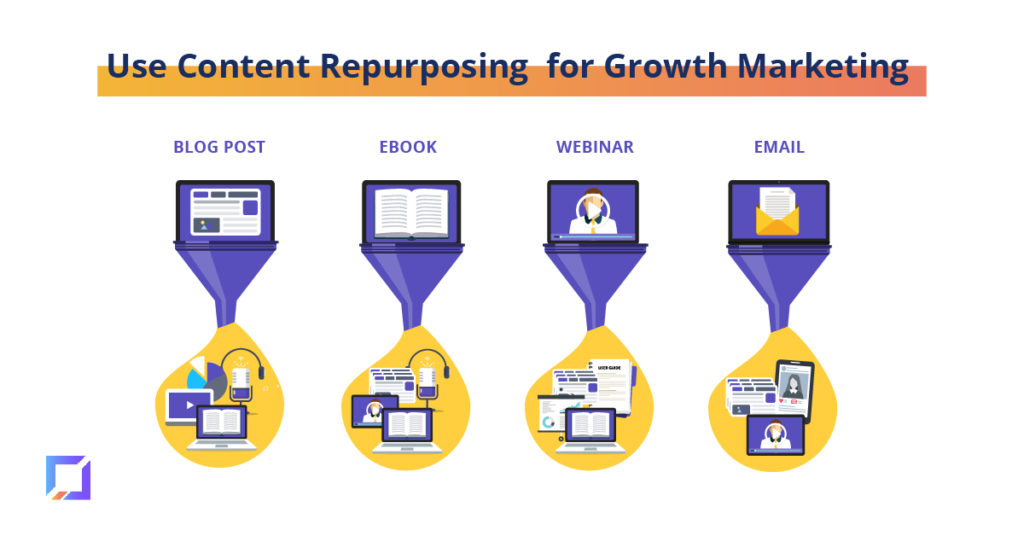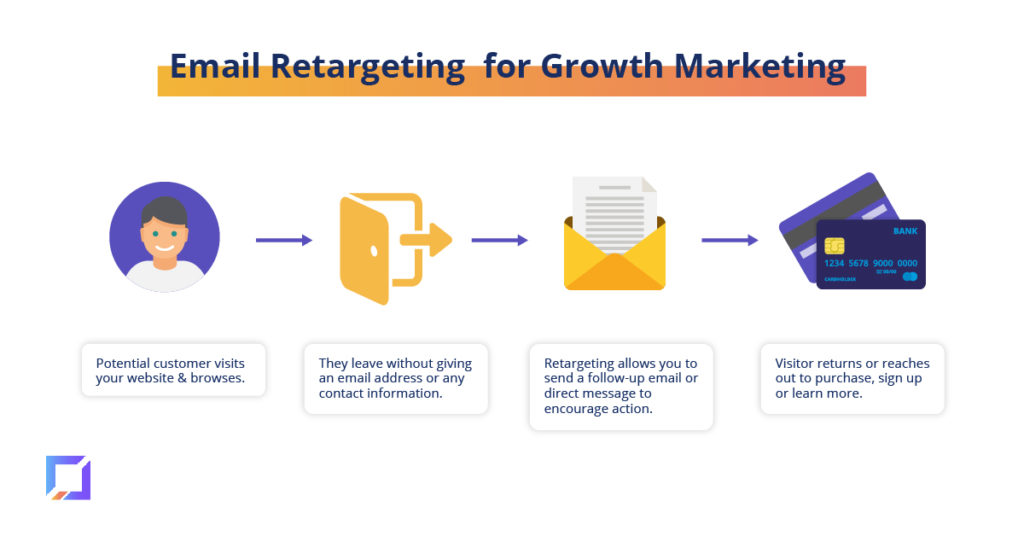Have you heard the term growth marketing, or growth hacking?
It sounds like just another buzzword marketers like to throw around to sell marketing tools, right?
In fact, growth marketing is an incredibly effective strategy — If you know how to use it.
Growth marketing isn’t just a catchy phrase; it’s a data-driven approach to growth that can help your business not just survive, but actually grow long-term.
Growth marketing can also make getting the most out of your marketing budget easier by zeroing in on the strategies that actually work.
This article provides a primer to growth marketing along with a step-by-step walkthrough to help you implement growth marketing strategies that will help your business grow fast.

Get long-term ROI.
We help you grow through expertise, strategy, and the best content on the web.
What is Growth Marketing?
Growth marketing, sometimes called growth hacking, is a marketing strategy that focuses on one core goal — growth.
Rather than asking “How can our business increase leads?” or “How can our business improve our inbound marketing efforts?”, growth marketing pushes marketers and business owners to focus on growth in every stage of the marketing funnel, including:
- Customer acquisition
- Customer activation
- Customer retention
- Revenue growth
- Referrals (both in number and quality)
Zoom, an online video conferencing software, has grown rapidly in recent years. In fact, first-time installations of Zoom’s software have skyrocketed 728% since March 2, 2020.
While an increase in remote working is likely part of their success, they’ve also been committed to growth marketing from the beginning.

The company has accomplished this impressive growth by focusing on being customer-driven, letting their product do the talking, and striving to balance growth with a grounded approach.
Here’s what Zoom CEO Eric Yuan had to say about Zoom’s growth:
“Ultimately, we do not want to grow too fast. Our philosophy is we really focus on making our existing customers happy. We do not aggressively pursue the new prospect. Also, we always prioritize the features requested by our existing customers.”
How is growth marketing different from traditional marketing?
Traditional marketing like advertising posters & flyers tends to focus on the top of the marketing funnel — That is, getting leads or prospects that can then be targeted with further marketing efforts.
On the other hand, growth marketing challenges marketers to focus on every aspect of the sales funnel with one goal in mind: growth.
How to Implement Growth Marketing
Here’s a scary stat for you: Nearly 20% of businesses never make it past their first year in business.

Why? Because they don’t know how to actually get and keep a new customer.
Growth marketing is the key to building a successful company, not just for that first year, but for many years to come.
The problem is that many people don’t understand how to implement growth marketing, which leaves them frustrated. Or they assume it’s just another gimmicky marketing term that won’t help.
The reality is, growth marketing could be the difference between a business that succeeds — and one that flops.
Here’s what you need to know to succeed as a growth marketer:
Step 1: Set the foundation for growth marketing
Here’s the deal — you can’t successfully implement any marketing strategy if you don’t understand who your audience is or what they want.
Understanding your audience is particularly important when it comes to growth marketing because understanding what your audience wants — and what problems they have— makes it far easier to position your product or service as the solution.
So, how do you set the foundation for your growth marketing strategy?
#1. Create a detailed buyer persona

Buyer personas are a detailed outline of who your audience is, the challenges they face, and the goals most important to them.
Every piece of marketing you create should be viewed through the lens of your buyer persona to ensure it speaks to your customers.
Your detailed buyer persona should include:
- Demographic information: general age, gender, education, etc.
- Where they get their information
- What digital channels they use most often
- Goals
- Pain points
This will help you better understand your audience, allowing you to determine your most effective strategies.
#2. Outline the customer journey
How do customers go from hearing your brand name to clicking “Buy now”?
Do they find you on social media? Read about you in their favorite magazine? Hear about your brand from a friend? What happens next?
This is the customer journey, and it can be an incredibly complex process. At its core, there are three main stages of the customer journey:
- Awareness: (what it is)
- Evaluation (comparing options)
- Conversion (make a decision)
Here’s a simple example of the customer journey, from Dapper Apps, a mobile app development company.

Start by outlining the customer journey.
Then consider what questions the customer may have at each stage, what feelings they are experiencing, and how your brand can respond.
Look for ways to answer their questions. Provide content and resources that help move the customer from one step to the next.
Step 2: Hack your content marketing by repurposing content

Content marketing is one of the most effective digital marketing strategies out there. In fact, content marketing leaders see 7.8 times more site traffic than other companies.
But, there’s a problem — creating great content takes time.
A lot of time.
In fact, the average blog post takes around 4 hours to write.
Growth marketing focuses on making every digital marketing strategy more effective, so how can you get the most out of that content you spent so long creating?
By repurposing content you’ve already invested in.
For example, say your marketing team created a long-form, really detailed ebook, like this one from Moz about link building.
It is an incredibly thorough piece that covers everything from what link building is to advanced link building strategies.
Some readers, however, aren’t likely to dig into this several thousand-word guide.

Rather than letting the book sit, you could create shorter blog posts about each topic.
Or, host a webinar that covers a handful of the most advanced strategies. You could even use an infographic to distill a few of the best link building metrics.
You’ve already invested time into creating this fantastic piece of content, which means it will take far less time to create spin-off pieces that are just as valuable.
Here are a few other ways you could turn one piece of content into multiple pieces.
- Combine blog posts into an ebook.
- Turn an ebook into a webinar series.
- Take stats from a long blog post and create an infographic.
Remember, growth marketing is all about being as efficient as possible. Reusing content will help drive organic traffic — and require far less effort than creating content from scratch every time.
Step 3: Hack your email marketing

You’ll sometimes hear growth marketing called growth hacking, which is a fancy-sounding word for the same thing.
But why, you might ask, should you be growth hacking your email marketing?
For starters, the average ROI for email is $42 for every dollar you spend — which is an incredibly high rate of return.
Plus, you own the channel, which makes it easier to communicate with your audience as you won’t have to worry about changing algorithms or updated terms of service.
Growth hacking takes an already effective marketing strategy and makes it even more effective.
Here’s how to apply growth marketing strategies to your email marketing:
#1. Grow your email list
Your email list is one of the most valuable assets your business has. It is a list of people who are in your target audience — and have also expressed interest in your brand. These aren’t cold leads you need to educate; they are warm leads who might just need a little nudge.
Here are a few tips for growing your email list so you can grow your business:
- Ask for email everywhere — on your website, at the end of your blogs, social media, in person, in your personal emails, etc. Don’t be overly pushy, but make it easy for them to know you have a list and to sign up.
- Give people a reason to forward your emails by sharing relevant information, resources, coupons, and, yes, you can even create funny memes and send. If your list shares your email, it means they find it valuable — and may bring in new subscribers.
- Offer something in exchange, such as a contest prize, a resource, or even a coupon. People are more likely to hand over their contact info when there’s something in it for them. For example, Medithrive offers a 10% discount for consumers recreational cannabis order when they sign up to its newsletter. This discount is a strong incentive for customers to give their contact email and will result in Medithrive growing their newsletter database.
#2. Engage your email list
You’ve got an email list, now what?
Now it is time to start using email to build a strong relationship with your audience. Keep in mind that the average person receives more than 120 emails every day — Why should they open yours?
They will open your email if it is useful and relevant. Here’s how to growth hack your email engagement — without spending tons of time you don’t have to send manual emails.
- Automate welcome emails/ thank you emails.
- Send useful resources — even if they aren’t yours.
- Encourage readers to share/ reply to emails.
- Increase your email deliverability rate securing you domain with DMARC
#3. Drive action
Building a list and engaging your subscribers builds a foundation — But the reality is, emails should drive actions. The best way to drive action is by segmenting your list, so you only send the most relevant emails.
As a growth hacker, for example, you might send an email reminding people who bought sandals this summer that winter is coming and show off your new boot inventory.
Here are a few tips for driving action with emails:
- Segment your list and send only relevant messages
- Use strong CTAs — and test features such as button color, copy, and links.
- Use retargeting and write an email containing ultra-targeted messages including abandoned cart emails and emails for items readers have expressed interest in.
Step 4: Use growth marketing to get leads
At its core, earning more leads is all about providing value. People don’t want to offer their information unless there’s something in it for them.
Here are a few tips for driving more leads:
- Review your homepage and your landing page copy. Make sure it uses strong verbs that drive action. Here’s an example from Take Spruce– notice how the verbs suggest a strong action, versus weaker adverbs that dilute the message:

- Use exit-intent popups to capture emails from site visitors that don’t convert.
- Link to lead gen resources like webinars from your most valuable content.
- Streamline your form — The longer it takes to fill out a form, the fewer leads you will get.
Some brands use a longer form to pre-qualify leads, but if your goal is more leads, make it easy for users!
Pay attention to your lead generation funnel — If you are losing users at a specific step, look for ways to shore up those leads using a tool like Google Optimize.
Step 5: Turn leads into conversions
Once you’ve got those leads, how do you turn them into actual customers? Does it start with the right landing page? The perfectly timed email? Aggressive retargeting?
While those strategies can be effective, the most crucial step is pretty simple:
The most effective way to turn leads into conversions is to send the right solution at the right time.
Here’s how to do that:
- Make sure your sales team understands where leads come from. For example, they should know if leads are cool, such as from an exit-intent popup — Or warm because they signed up for a free trial.
- Segment your lead list so you only send the most relevant emails. For example, a customer who expressed interest in your SaaS product might be interested in a training session (i.e., if you offer a coworking management software, for the first time it’s better just to clarify the main features and customize your sessions as much as it’s possible), while a customer you’ve had for two years likely wouldn’t.
- Consider focusing on getting more qualified leads rather than more leads in general.
- Be persistent. According to Salesforce, it can take between 6 and 8 ‘touches’ before a lead converts. Don’t give up after one or two emails.
As a marketer, you’ve likely got a ton of tasks on your plate. Don’t let focusing on getting leads overshadow the growth goal of converting those leads.
Step 6: Don’t be afraid to try new marketing strategies
It’s easy to get stuck in a digital marketing rut. Once you find a strategy that works, why would you bother looking for another strategy, right?
Marketing changes fast; if your growth marketing team only focuses on a marketing strategy that worked five months ago, growth will stall.
You should be trying new strategies and testing new technologies every quarter.
Next quarter, test a new strategy or marketing channel, such as:
- New social media channels like Tiktok, Instagram Stories, etc.
- Live streaming video on Instagram or YouTube
- Website chatbots, Facebook messenger bots
- AI (artificial intelligence) and machine learning
- Affiliate marketing tools and methods
You can even test direct marketing strategies like personalized gifts and direct mail.
Look for ways to leverage automation tools, such as scheduling and AI tools, to make these new strategies easier to implement long-term.
Final Thoughts on Leveraging Growth Marketing
The most important thing to remember when it comes to growth marketing is to focus on results that you can actually track.
That data will give you insight into what your audience actually wants so you can focus more energy — and marketing budget or startup loan — on what actually works.



